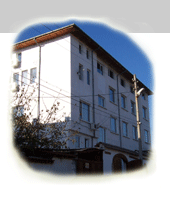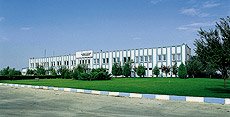World's 3rd biggest textile fair begins in Istanbul
The world's third biggest fair in the textile industry, the IF 10th International Istanbul Fashion Fair opened its gates yesterday to various purchasing agents at the CNR EXPO exhibition center, at a time when the Turkish textile sector is feeling the heat from Chinese competition.
“Textile and ready-to-wear clothing in Turkey is currently going through the most powerful period, and can attain an increase in exports despite the high cost of input and competition conditions,” said state minister, Kürşat Tüzmen, in the opening ceremony. The aim is to make Istanbul the center of fashion, he said.
The Turkish textile and ready-to-wear sector still has 25 percent of the market share, Tüzmen said. “While all the neighboring countries have seen a deterioration of 40 percent in the sector, Turkey has witnessed an increase of 17 percent,” he said.
“The real issue from now on is now to introduce an alternative Turkish style, rather than competing with big fashion producers like Italy and France,” said Süleyman Orakçıoğlu, the head of the Istanbul Union for Ready to Wear Clothing Exporters (İHKB).
The sector displayed late success with the fair, the head of Turkish Exporters Assembly (TİM) Oğuz Satıcı said. The capacity of the sector is $40 billion currently, and will reach $150 billion in 2023, Satıcı said.
Around 30,000 visitors are expected to visit the fair including purchasing delegations from countries such as Germany, the U.S., Algeria, Morocco, France, the U.K., Spain, Italy, Japan, Egypt, Portugal and the Russian Federation. More than 300 firms are participating in the fair, which will end August 25.
‘Low participation'
However some visitors found the participation of firms in the fair lower than previous years. “It is due to the [negative] course in the sector,” said İrem Özkal, from Seyhan Textile, one of the participating firms. The demand for the fairs diminished as the sector narrowed, designer Simay Bülbül said as well.
“[But the firms] need to participate in the fairs for prestige, even they could not sell,” she said, “The fairs need to live.”
The change in designs is toward a more environmentalist stance, due to the affects of global warming and increasing dirtiness, Bülbül said. Less harmful and chemical fabrics are starting to be used in clothes, she added.
Uncreative designs
Meanwhile some of the young design students visiting the fair did not find the designs creative enough. Ezgi Yurdusev thought that the Turkish designs are more “passive” compared to designs found abroad. “Creativity is lower here,” she said. The fair is weaker than the other fairs before in terms of design and participation of firms, said Hale Sevsevi, another young designer who sported a headscarf. The decline in the textile sector is the reason for her. “The works are aimed at sales only,” she said.
However, the owners of Berin Manto from İzmir did not concur with the ideas of young designers. “Much warmer designs, [they are] like meeting a family member,” Kemal Sönmez said. Kemal and Kamile Sönmez highlighted the return to old designs. “More woman and more chic,” Kamile defined the designs she saw at the fair. Kemal found the concepts better than in previous years as well.
Raa Kawati and Raouna Rafia visiting the fair from Syria found the fair creative. “There are very nice and new ideas in designs here,” Kawati said.
Best quality fabrics
Marcellous Jones, the editor of thefashioninsider.com, a fashion and beauty Web site from France came to Istanbul to follow the fair as well along with other numerous foreign visitors. Turkey produces some of the world's best quality and almost most beautiful fabrics, Jones said. Some of the best leather and cotton is Turkish, said Carolyn Egan, who is an expert on fabrics and fashion editor. The American market could benefit much by covering the Turkish market, Egan said.








Hiç yorum yok:
Yorum Gönder